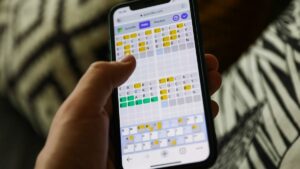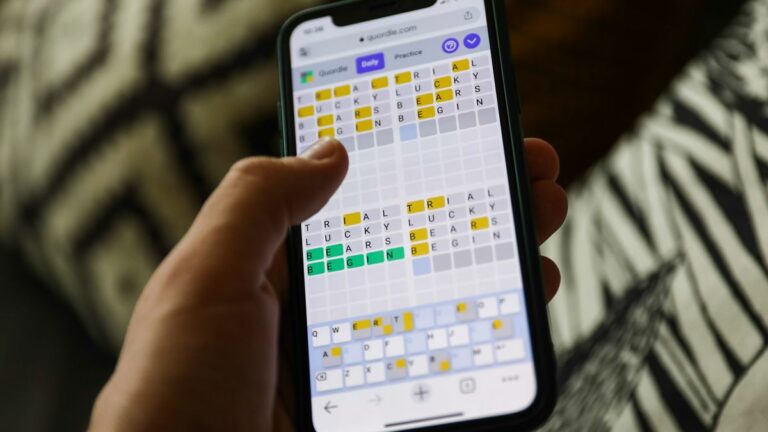The next rendition of iOS 17 is right around the corner, and it’s bearing gifts we want and a few better left on the drawing-room table. The latest iOS 17.5 beta includes a hidden game for Apple News+ subscribers called Quartiles. The game features word snippets in five-by-five tiles that players must match to create the best words. It is the only new puzzler to enter the section since Apple started offering the crossword last year with iOS 17.
Unfortunately, I hate the game. I hate its guts. It will be too soon if I never see another tile word game for the rest of my English-speaking life.
How to Find Quartiles
Quartiles can be found in the Apple News app under the Following tab and under Puzzles for those who sign up for the iOS 17.5 beta. At first glance, it’s very akin to several NYT Games in both look and form. You’re presented with a grid of morphemes, phonemes, syllables, and word snippets and asked to create longer words from the list. It’s a daily puzzle that refreshes every morning, and every day, there’s a new set of five “Quartiles” that are made up of four options in the daily mix. Seems simple, right? Well, yes, but also no, not at all. Like all word-based games, playing it demands a certain base knowledge of English. The crossword needs you to know a fair bit of trivia on top of the common ways the daily mind-bender tries to make each prompt a little more than meets the eye.
According to code sleuths and early testers, the update promises a redesigned podcast widget and updates to the anti-stalking tech on Airtags, among a few other changes to allow EU users to ignore the App Store. Beyond all that. It seems Apple is gunning for the New York Times’ new bread and butter, namely the NYT Game app. The Cupertino, California company could have made a Wordle or Tiles clone in that effort. Still, I feel as if Apple looked at Time’s example instead and must have thought, “How could I do the same thing but make it infinitely more infuriating to play.”

First, I should mention that all word-based puzzle games have a steep or even impossible learning curve. They rely on pre-existing expertise that precludes many ESL speakers, people with learning disabilities, or anybody who didn’t do well in their high school English courses. A good puzzle game introduces you to its mechanics before gradually complicating each puzzle.
Think Portal or The Witness for good examples of how each new mechanic builds on the last until the player feels like they’ve progressed far enough and don’t need any more training wheels. For the most part, the NYT nor Apple’s puzzle games offer any onramp to do better eventually. The mini crossword is the best, but it has the same difficulty as the regular crossword and takes less time.
I’ve played my share of the NYT Games. I’ve never been good at crossword or sudoku, so instead, I used my relatively limited internal thesaurus for the sake of games like Spelling Bee or Connections. I vastly prefer the latter. Not only is it easier, but it takes far less time to complete, and if that day’s puzzle is especially hard (or just plain old poorly designed), then perhaps the next day’s connections will be less egregious. It’s similar to Wordle in that regard, but I’ve always disliked how Wordle feels far more like a guessing game than an actual puzzle, so I’ve ignored it over the years.
Open-ended puzzle games are much more difficult to manage than those with a strict endpoint. The player is forced to set their own goals and stop when they feel like they’ve done all they can. If you’re like me, the sense that you didn’t quite reach the “Genius” level never leaves you feeling satisfied. By the two-hour mark of on-and-off trying to guess the day’s Spelling Bee pangram—the word that incorporates all the letters of the day’s Bee—I often ended up wondering if I even spoke the same language as the game’s designers.
How to Play Quartiles

Apple’s Quartiles is Spelling Bee, only exponentially worse. In Spelling Bee, you can ramp up your guesses with a few four- or five-letter words that make you feel like you’re making progress. Then you start thinking hard about vowel placement and syntax, and hell, you might actually start to put down a few six-seven letters and perhaps even get the fabled pangram. In Quartiles, you’re stuck in an infinite loop of choice paralysis.
You can try to section different tiles into their own little prefix or suffix categories in your head, but even when you do, you’re still left with the enormous task of matching 25 separate word snippets every single time.
Eventually, I resorted to picking a snippet and going down the full list until I could create a word I know exists. It’s a pain, and it’s not fun. When I manage to find a Quartile—which picks out four tiles into one word—it feels more like happenstance than skill.
It might be better if there were any controls to segment the tiles for my own use, but the only way you can manipulate your board is by randomizing them, much like the current selection of NYT Games. Even when you feel you’ve exhausted all the two-tile words on the page, there’s less of a sense of triumph and more a foreboding, knowing that there’s no real hope of parsing the maze of letters.
Every Quartile you guess right should make the next easier to make, but unlike Connections, which boils down the total number of tiles of distinct nouns and concepts, you’re offered the same problem as before. The game doesn’t evolve; it revolves. No matter what I did, I felt like I was stuck spinning my wheels. I have only so much free time in a day, and I would rather not spend it desperately trying to match “cul” with dizzying combinations of “ial,” “rd,” “ex,” and so on.
Hell, I would rather play Wordle than this mess. At least I know there’s an end-point when the game says you either succeed or fail at your five-letter guessing game. You also need to pay for Apple News+ to get access to the game. In that case, save your money for any number of puzzle games that are designed with real intent behind them.
Want more of Gizmodo’s consumer electronics picks? Check out our guides to the best phones best laptops, best TVs, and best headphones. If you want to learn about the next big thing, see our guide to everything we know about the iPhone 16.


















+ There are no comments
Add yours